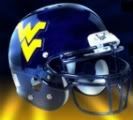Post by elp525 on Feb 17, 2011 7:38:49 GMT -5
Wednesday February 16, 2011
by Mike Casazza
Charleston Daily Mail
MORGANTOWN, W.Va. -- Two years ago, Greg Van Zant managed one of the best offensive teams in college baseball. West Virginia had three players bat .400 or better and help the Mountaineers set single-season records for batting average, RBI, doubles, extra-base hits and runs scored.
"Back in 2009, I was scared to steal a base," Van Zant said. "I didn't want to risk the out and see the next guy hit a home run."
The game is changing, literally and physically, beginning this season. The NCAA is introducing bat standards governed by the ball-bat coefficient of restitution. The BBCOR is a formula implemented to minimize the "trampoline" effect when the ball comes off the bat.
The goal, as stated by the NCAA, is for new bats to "perform similarly to wood bats."
The Mountaineers, who begin their season Friday with a game against Iowa in the three-game Big Ten/Big East Challenge in Florida, agree with the comparison.
"The sweet spot is much, much smaller and the ball definitely doesn't carry as far," said Grant Buckner, a WVU senior and former Herbert Hoover High School star who will start at shortstop this season. "Physically they feel the same as the old bat, but you can judge it. We put a ball on a tee and have the radar clock the velocity of the ball and it's a solid 7-8 mph slower off the bat."
WVU should have a better feel for things when it makes its home debut March 8 at Hawley Field - 12 games into the season.
"If you hit it right off the sweet spot, you can get the same results, but that's easier said than done," said Buckner, the 2006 Gatorade Player of the Year.
Every Division I team did away with the bats it used last season and must use the new, deadened bats this season. The Mountaineers started playing with theirs for the second half of the 25-game fall season.
"I'm sitting in the dugout and a kid crushes the ball and it comes off the bat and I'm thinking the ball is out of the park, but it's a fly ball to the left fielder," Van Zant said. "A guy gets all of it and hits it to the warning track.
"My guess would be, say, last year the leader in home runs hit 28 or 30.
"This year, maybe the guy hits 15."
WVU returns 12 seniors and 18 lettermen from last season's team that went 27-30 and 10-17 in the Big East and was picked in the preseason to finish ninth in the 16-team conference.
Four of the 18 are players who batted better than .300 last season, led by Buckner, who finished at .363 with eight home runs, 17 doubles, 37 runs and 50 RBI. He made the 2011 preseason All-Big East team.
Those numbers still matter, but taking on greater significance this season would be the .452 on-base percentage. Buckner drew 21 walks and was hit by 15 pitches in addition to his 73 base hits.
"Guys aren't going to get as many doubles and home runs with these bats and teams might try to play small ball and put an emphasis on running and bunting," Van Zant said. "You're going to see guys steal more bases and that's going to change your lineups some. You need to play guys who can run and score on base hits."
In explaining the new standards in August, the NCAA pointed to the rise in offensive numbers. Home runs rose from 0.64 per game in 2007 to 0.84, 0.96 and 0.94 the following three seasons. Runs per game went from 6.1 in 2007 to 6.57, 6.88 and 6.98.
"We may have to recruit different," Van Zant said. "Speed is at a premium. That would probably be the biggest thing for position players. Hawley Field used to be a small ballpark and then we backed it up, but we have these new bats.
"When we had the live bats, we went through what everyone called 'Gorilla Ball' in college baseball. The ball flew off the bat and we tried to recruit bashers.
"If you've got the 6-foot-5, 240-pound guy who crushes it and it's not a home run, then you might just go with a smaller guy."
The bats even change the way Van Zant evaluates pitchers.
"A guy who might not have overpowering stuff, but pounds the strike zone and throws a ton of strikes is going to be a valuable guy," Van Zant said. "You don't have to strike everybody out now."
The Mountaineers have options there. Senior Andy Berry was second on the team with 13 starts last season and finished 4-3, but with a 6.11 ERA. Sophomore Michael Twigg, from Berkeley Springs, made seven starts in 11 appearances and was 3-1 with a 5.44 ERA. Seniors Matt Marrone and Jonathan Hash and sophomore Jared Hill all made eight appearances last season.
Van Zant is also optimistic about what he says is "one of the most talented group of freshmen we've had" on the staff, including true freshmen Josh Harlow, of Lincoln High School; Harrison Musgrave, of Bridgeport; Ryan Tezak, of Hershey, Pa.; and redshirt freshmen Marshall Thompson and Zach Bargeron.
"We've got a lot of position players who know what they're doing, but we're actually more experienced on the mound," Van Zant said. "We've got a lot of talented pitchers and many of them are freshmen. We've got some pretty good freshmen this season."
by Mike Casazza
Charleston Daily Mail
MORGANTOWN, W.Va. -- Two years ago, Greg Van Zant managed one of the best offensive teams in college baseball. West Virginia had three players bat .400 or better and help the Mountaineers set single-season records for batting average, RBI, doubles, extra-base hits and runs scored.
"Back in 2009, I was scared to steal a base," Van Zant said. "I didn't want to risk the out and see the next guy hit a home run."
The game is changing, literally and physically, beginning this season. The NCAA is introducing bat standards governed by the ball-bat coefficient of restitution. The BBCOR is a formula implemented to minimize the "trampoline" effect when the ball comes off the bat.
The goal, as stated by the NCAA, is for new bats to "perform similarly to wood bats."
The Mountaineers, who begin their season Friday with a game against Iowa in the three-game Big Ten/Big East Challenge in Florida, agree with the comparison.
"The sweet spot is much, much smaller and the ball definitely doesn't carry as far," said Grant Buckner, a WVU senior and former Herbert Hoover High School star who will start at shortstop this season. "Physically they feel the same as the old bat, but you can judge it. We put a ball on a tee and have the radar clock the velocity of the ball and it's a solid 7-8 mph slower off the bat."
WVU should have a better feel for things when it makes its home debut March 8 at Hawley Field - 12 games into the season.
"If you hit it right off the sweet spot, you can get the same results, but that's easier said than done," said Buckner, the 2006 Gatorade Player of the Year.
Every Division I team did away with the bats it used last season and must use the new, deadened bats this season. The Mountaineers started playing with theirs for the second half of the 25-game fall season.
"I'm sitting in the dugout and a kid crushes the ball and it comes off the bat and I'm thinking the ball is out of the park, but it's a fly ball to the left fielder," Van Zant said. "A guy gets all of it and hits it to the warning track.
"My guess would be, say, last year the leader in home runs hit 28 or 30.
"This year, maybe the guy hits 15."
WVU returns 12 seniors and 18 lettermen from last season's team that went 27-30 and 10-17 in the Big East and was picked in the preseason to finish ninth in the 16-team conference.
Four of the 18 are players who batted better than .300 last season, led by Buckner, who finished at .363 with eight home runs, 17 doubles, 37 runs and 50 RBI. He made the 2011 preseason All-Big East team.
Those numbers still matter, but taking on greater significance this season would be the .452 on-base percentage. Buckner drew 21 walks and was hit by 15 pitches in addition to his 73 base hits.
"Guys aren't going to get as many doubles and home runs with these bats and teams might try to play small ball and put an emphasis on running and bunting," Van Zant said. "You're going to see guys steal more bases and that's going to change your lineups some. You need to play guys who can run and score on base hits."
In explaining the new standards in August, the NCAA pointed to the rise in offensive numbers. Home runs rose from 0.64 per game in 2007 to 0.84, 0.96 and 0.94 the following three seasons. Runs per game went from 6.1 in 2007 to 6.57, 6.88 and 6.98.
"We may have to recruit different," Van Zant said. "Speed is at a premium. That would probably be the biggest thing for position players. Hawley Field used to be a small ballpark and then we backed it up, but we have these new bats.
"When we had the live bats, we went through what everyone called 'Gorilla Ball' in college baseball. The ball flew off the bat and we tried to recruit bashers.
"If you've got the 6-foot-5, 240-pound guy who crushes it and it's not a home run, then you might just go with a smaller guy."
The bats even change the way Van Zant evaluates pitchers.
"A guy who might not have overpowering stuff, but pounds the strike zone and throws a ton of strikes is going to be a valuable guy," Van Zant said. "You don't have to strike everybody out now."
The Mountaineers have options there. Senior Andy Berry was second on the team with 13 starts last season and finished 4-3, but with a 6.11 ERA. Sophomore Michael Twigg, from Berkeley Springs, made seven starts in 11 appearances and was 3-1 with a 5.44 ERA. Seniors Matt Marrone and Jonathan Hash and sophomore Jared Hill all made eight appearances last season.
Van Zant is also optimistic about what he says is "one of the most talented group of freshmen we've had" on the staff, including true freshmen Josh Harlow, of Lincoln High School; Harrison Musgrave, of Bridgeport; Ryan Tezak, of Hershey, Pa.; and redshirt freshmen Marshall Thompson and Zach Bargeron.
"We've got a lot of position players who know what they're doing, but we're actually more experienced on the mound," Van Zant said. "We've got a lot of talented pitchers and many of them are freshmen. We've got some pretty good freshmen this season."





